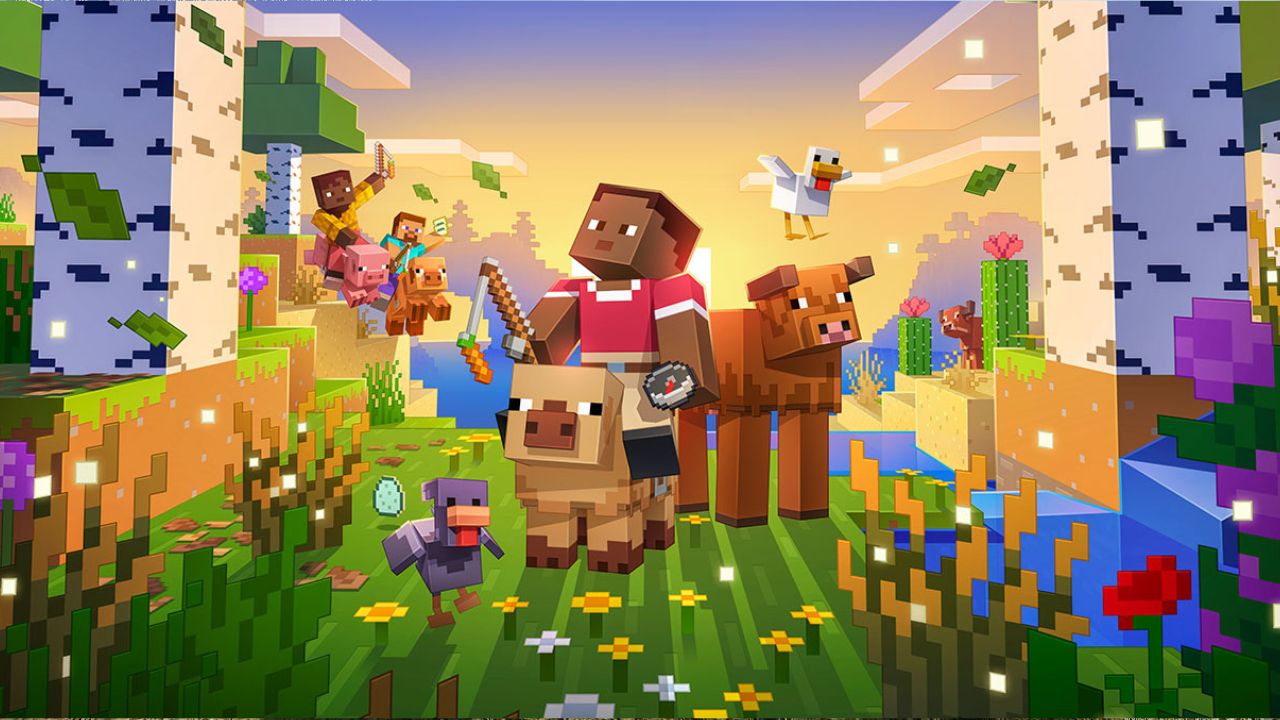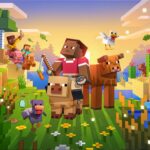What started as a simple block-building game by a single developer has grown into one of the most successful video games of all time. Minecraft launched in 2011 and quickly captured the attention of players across the globe with its unique sandbox gameplay. The game lets people build, explore, and create whatever they can imagine using simple blocks.
Minecraft has dominated the gaming industry for over a decade by combining creative freedom, regular updates, and a massive community that spans all age groups. The game now has over 200 million registered players worldwide and continues to attract new fans every year. What makes this success even more remarkable is that Minecraft maintains its popularity without flashy graphics or complex storylines.
The secret behind Minecraft’s lasting success goes far beyond its blocky appearance. The game has influenced how other developers design games, changed how people think about digital creativity, and even found its way into classrooms around the world. From its humble beginnings as an indie project to becoming a cultural phenomenon, Minecraft has proven that simple ideas can have the biggest impact on the gaming world.
The History and Growth of Minecraft
Minecraft started as a simple indie project in 2009 and grew into one of the most successful games ever made. The game’s journey from a small Swedish studio to Microsoft ownership shows how creative vision and community support can change the entire gaming world.
What Made Mojang’s Vision So Special?
Markus “Notch” Persson created Minecraft in 2009 with a simple idea. He wanted players to build and explore in a world made of blocks. This sandbox approach was different from most games at the time.
Mojang Studios formed around this vision. The team believed players should have complete creative freedom. They could build anything they wanted without strict rules or goals.
The early development focused on three main areas:
- Creative building with unlimited blocks
- Survival gameplay with monsters and crafting
- Exploration in randomly generated worlds
Notch released early versions of the game for players to test. This approach helped the team learn what players wanted most. The community gave feedback that shaped the game’s development.
The blocky graphics looked simple but served a purpose. Players could easily understand how to build and create. The visual style also meant the game could run on older computers.
What Were Minecraft’s Biggest Growth Moments?
Minecraft hit several major milestones that boosted its popularity. The official release came in November 2011 after two years of testing. By then, the game already had millions of fans.
YouTube played a huge role in Minecraft’s growth. Content creators made videos showing their builds and adventures. These videos brought new players to the game every day.
The game expanded to new platforms quickly:
- PC version (2009-2011)
- Mobile edition (2011)
- Console versions (2012-2013)
- VR support (2016)
Each new platform brought millions of new players. The mobile version made Minecraft accessible to people who didn’t own gaming computers. Console versions reached families and casual gamers.
Educational uses also drove growth. Teachers started using Minecraft in classrooms. Students could learn history by building ancient cities or practice math through construction projects.
By 2014, Minecraft had over 50 million players across all platforms. The game was selling millions of copies each year.
How Did Microsoft Change Minecraft’s Future?
Microsoft bought Mojang Studios for $2.5 billion in September 2014. This purchase surprised many people in the gaming world. Some fans worried Microsoft would change the game too much.
Instead, Microsoft helped Minecraft grow even bigger. The company had resources to expand the game in new ways. They could reach more players and add features faster.
Microsoft made several important changes:
- Cross-platform play between different devices
- Minecraft Education Edition for schools
- Marketplace for player-created content
- Regular updates with new features
The acquisition brought technical improvements too. Microsoft’s servers made online play more stable. They also helped bring the game to new platforms like Nintendo Switch.
Player numbers kept growing under Microsoft. The game reached 141 million active players by 2021. This made Minecraft one of the most played games in history.
Microsoft also expanded Minecraft into other areas. They created spin-off games and partnered with other companies. The brand became bigger than just the original game.
Why Minecraft Continues to Captivate Players
Minecraft’s lasting appeal comes from four main factors that keep millions of players engaged. The game offers unlimited creative freedom, strong community connections, endless user-made content, and easy access across different devices.
What Makes Minecraft’s Creative Freedom So Special?
Minecraft gives players complete control over their virtual worlds. They can build anything they imagine using simple blocks. This sandbox approach means there are no strict rules or goals to follow.
Players can create massive castles, working computers, or entire cities. The building system is easy to learn but hard to master. New players can make simple houses while experts design complex machines.
The game includes two main modes that support creativity:
- Creative Mode: Unlimited resources and the ability to fly
- Survival Mode: Players gather materials while avoiding dangers
Each world generates randomly with different landscapes. This means every player starts with unique terrain to explore and build on. Mountains, oceans, deserts, and forests create different building challenges.
The crafting system lets players make tools, weapons, and decorative items. With over 400 different blocks and items, the combinations are endless. Players spend hundreds of hours experimenting with new designs and techniques.
How Does Multiplayer Build Strong Communities?
Minecraft’s multiplayer features create lasting friendships and communities. Players can join servers with thousands of other people or play privately with friends.
Custom servers offer specialized experiences. Some focus on building competitions while others feature survival challenges. Minigames like hide-and-seek or racing attract different player types.
Many servers have their own rules and cultures. Players form groups, create towns, and work together on big projects. These communities often last for years.
The game supports both local and online play. Families can play together on the same network. Friends across the world can meet up in shared worlds anytime.
Popular server types include:
- Creative building servers
- Survival multiplayer worlds
- Mini-game networks
- Role-playing servers
- Educational servers for schools
Players often switch between different servers based on their mood. This variety keeps the multiplayer experience fresh and exciting.
Why Is User-Generated Content So Important?
The Minecraft community creates an enormous amount of content. Players share their creations through videos, screenshots, and downloadable files. This content keeps the game feeling new and exciting.
Mods change how the game works by adding new features. Some mods add magic systems while others include space travel. Popular mods can attract millions of downloads.
Resource packs change how the game looks and sounds. Players can make Minecraft look realistic or completely cartoonish. These packs let people customize their visual experience.
Maps are pre-built worlds that players can download. Adventure maps tell stories while puzzle maps challenge problem-solving skills. Some maps recreate famous locations from movies or books.
YouTube and streaming platforms showcase amazing creations daily. Popular creators inspire others to try new building techniques. This creates a cycle where creativity spreads throughout the community.
The game’s simple graphics make it easy for anyone to create content. Players don’t need expensive software or advanced skills to make something impressive.
How Does Cross-Platform Support Keep Players Connected?
Minecraft works on almost every gaming device available today. Players can switch between their phone, computer, and game console while keeping their progress.
Bedrock Edition connects players across different platforms. Someone on Xbox can play with friends using phones or Nintendo Switch. This removes barriers between different gaming communities.
The game runs well on older devices too. Players don’t need expensive hardware to enjoy the full experience. This makes Minecraft accessible to people with different budgets.
Cloud saves let players access their worlds from any device. They can start building on their computer at home and continue on their phone during travel.
Cross-platform features include:
- Shared multiplayer servers
- Friends lists across devices
- Marketplace purchases on all platforms
- Achievement tracking everywhere
Mobile versions include touch controls that work well for building and exploring. Console versions support split-screen play for families sharing one TV.
This accessibility means Minecraft reaches players who might not consider themselves gamers. Parents play with children, and friends stay connected regardless of their preferred devices.
Cultural Influence and Lasting Industry Impact
Minecraft changed more than just how games are made. It transformed education, inspired countless developers, and became a major part of popular culture worldwide.
How Did Minecraft Transform Education and Learning?
Teachers around the world discovered Minecraft could make learning fun and engaging. The game helps students understand complex subjects through hands-on building and exploration.
Minecraft Education Edition launched in 2016 specifically for schools. This version includes special tools for teachers and classroom management features.
Students use Minecraft to:
- Build historical landmarks and ancient civilizations
- Learn math concepts through construction projects
- Understand science by creating chemical compounds
- Practice coding with command blocks
The game makes abstract concepts easier to grasp. When students build a Roman colosseum, they learn about history, architecture, and engineering all at once.
Many schools report higher student engagement in classes that use Minecraft. Kids who struggle with traditional teaching methods often thrive when learning through the game.
Teachers can track student progress and assign specific building challenges. The collaborative nature of Minecraft also helps students develop teamwork skills.
Why Has Minecraft Inspired So Many New Game Developers?
Minecraft proved that indie games could compete with big budget titles from major studios. Its success opened doors for countless small developers around the world.
The game showed that simple graphics and creative gameplay matter more than expensive visuals. This lesson changed how many developers approach game design.
Minecraft’s influence appears in hundreds of games that followed:
- Survival crafting games like Subnautica and The Forest
- Building simulators such as Roblox and Terraria
- Open world sandbox titles like No Man’s Sky
Many successful game developers cite Minecraft as their main inspiration. The game demonstrated that one person with a creative idea could build something millions of people love.
Modding communities around Minecraft also taught people programming skills. Thousands of players learned to code by creating mods for the game.
How Did Minecraft Become Part of Popular Culture?
Minecraft videos dominate YouTube gaming content. Popular creators like DanTDM and Dream have millions of subscribers who watch Minecraft content daily.
The game appears in movies, TV shows, and books. Netflix released a Minecraft story mode series that attracted viewers of all ages.
Merchandise sales prove Minecraft’s cultural impact:
- Clothing and accessories
- LEGO building sets
- Action figures and toys
- Books and guides
Minecraft conventions draw thousands of fans worldwide. Players gather to share builds, meet creators, and celebrate the game together.
The term “griefing” entered common gaming vocabulary because of Minecraft. Many gaming concepts that started in Minecraft are now standard across the industry.
Social media platforms are filled with Minecraft builds and screenshots. Players share their creations with pride, turning the game into a social experience beyond just playing.



